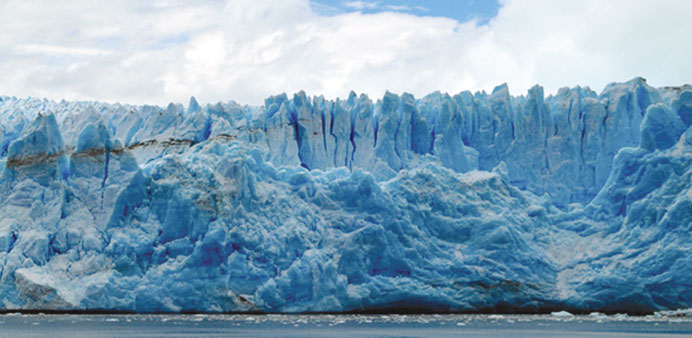The Southern Patagonian Ice Field in Chile.
By Bonnie James/Deputy News Editor
Qatar, which has the world’s highest per capita water use, one of the lowest levels of rainfall and heavily dependent on energy-intensive seawater desalination, could import fresh water from the Southern Patagonian Ice Field, a Chilean diplomat has suggested.
“The ice fields of Southern Chile are a vast reserve of one of the purest fresh waters in the world, " Jean-Paul Tarud K, Chile’s ambassador to the UAE, who also covers Qatar, told Gulf Times during a recent visit to Doha.
"The ice melt water is currently being lost to the sea second by second as there has not been a viable solution to transport it so far, even to the North of Chile itself, let alone to the World.
“It is everyone’s hope that the private sector companies are able to provide such critical solutions in the short term, and this initiative would certainly have a strong positive impact if successful,” the envoy said.
A trial project by a private company to export fresh water to the UAE is underway and the first shipment is expected to arrive in the next two or three months.
In terms of quality and purity the melt water from the Southern Patagonian Ice Field, one of the largest fresh water reserves on the planet, is described as “unparalleled”.
“It is the only new reliable resource of fresh water available, and with none of the environmental drawbacks associated with desalination and its high energy requirements,” it was pointed out.
It is learnt that at least two containers of fresh water are scheduled to be shipped to the UAE and the agency concerned is in a position to supply Qatar with water samples within a month, if required.
Water from the Southern Patagonian Ice Field is tapped from natural surface melt and precipitation right before it enters the ocean.
An expert maintained that consistent supply over a long term is ensured and costs will significantly decrease as volumes increase.
Outside of Antarctica, the largest contiguous ice field in the Southern Hemisphere is the Southern Patagonian Ice Field in the Andes Mountains of Chile and Argentina.
It has an area of about 13,000sqm, a length of approximately 360km (over three degrees of latitude), and an average width of about 40km.
The rate of glacial thinning has increased by about half over the last dozen years in the Southern Patagonian Ice Field, compared to the 30 years prior to 2000. This means more water has been flowing into the sea.
Studies have shown that the Southern and Northern Patagonian ice fields together raised global sea levels by an average of 0.042mm each year, between 1970 and 2000.
Since 2000, it has increased to 0.067mm on average per year – about 2% of total annual sea level rise since 1998.
The Southern Ice Field loses around 20bn tonnes of ice every year, and over the last 12 years, it has lost enough water to cover the entire US with 2.7cm of water. Combined, the two fields lost enough to raise that level to 3.3cm.
A Chilean company currently has concessions, from the Southern Patagonian Ice Field, exceeding 8,000 litres per second and is expecting permission to collect more of the ice melt water.
Though it has the capability of shipping water to northern Chile in large floating bags with capacities of 425,000 cubic metres (equal to the volume of large supertankers) towed through the sea, this method may not be feasible for export to the Gulf region, hence there is a plan to use modified supertankers.

